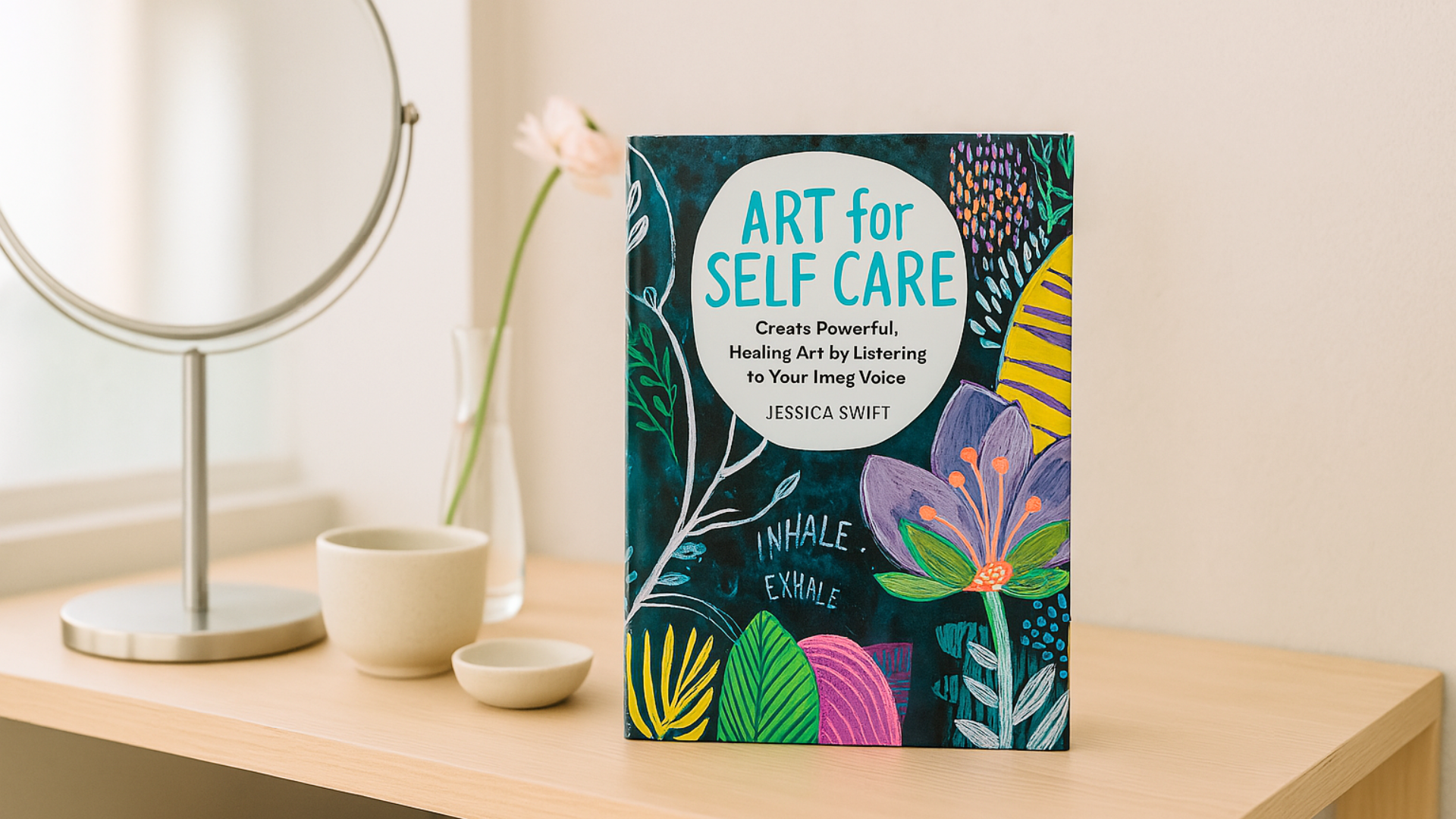Intuitive Artmaking as Self-Care: Jessica Swift’s Approach

Book Review: Art for Self-Care by Jessica Swift
A deeply personal and empowering guide to intuitive artmaking as a path to healing and inner connection
In Art for Self-Care, Jessica Swift offers more than a book of creative prompts. She opens a door to a meaningful, accessible, and emotionally honest practice of using art to reconnect with your inner self. Blending personal narrative, reflection, and creative encouragement, Swift guides readers through a process of showing up for themselves through art, even in the most tender and uncertain seasons of life.
This book is not about becoming an artist. It is about remembering that you already are one, in the way you listen, respond, and make space for what wants to emerge.
What the book promises
Art for Self-Care promises to show readers how to use creativity as a tool for healing, self-discovery, and emotional support. Swift introduces a process based on inner listening. She encourages readers to pause, tune in, and let their creative expression arise from what they hear inside. The emphasis is not on producing polished work. It is on showing up honestly and allowing the art to become a reflection of what is present.
The book invites people of all backgrounds and levels of experience to engage in creative practice as a form of self-care. Whether readers are navigating grief, burnout, uncertainty, or just a need to slow down, the promise is that this work can offer steadiness and insight.
What the book delivers
The book delivers on its promise with clarity, vulnerability, and warmth. It is divided into three main parts. The first focuses on turning inward and beginning to listen to your intuition. The second offers ideas and techniques for expressing what comes up through artmaking. The third helps readers reflect on what they’ve created and integrate the practice into their everyday lives.
Throughout, Swift shares openly from her own experiences, including the loss of her husband and the complexities of motherhood. These personal stories make the book feel trustworthy and grounded. Rather than offering advice from a distance, she speaks from within the creative process itself.
The creative prompts are approachable and varied. Readers are encouraged to use whatever materials they have on hand. Swift offers suggestions for painting, drawing, collage, and even digital tools, always with the reminder that there is no right or wrong way to do this.
Style and structure
Swift’s tone is kind, conversational, and calm. She writes with emotional intelligence and a deep respect for the reader’s inner experience. The chapters are short and thematically organized. Each one flows naturally into the next, while also standing on its own.
There is no pressure to complete the book in a certain order. The structure supports nonlinear exploration, which mirrors the intuitive nature of the creative process Swift describes. At the end of most chapters, readers will find soft prompts or reflections that feel like gentle nudges rather than assignments.
The overall layout is clean and inviting. The book includes references to Swift’s own artwork but avoids overwhelming the reader with visuals. The emphasis remains on process, not product.
Where the book shines
The book shines in its emotional presence. Swift does not shy away from the hard parts of life. She writes about grief, exhaustion, and feeling lost with honesty and care. In doing so, she creates space for the reader’s own complexity. This makes the book feel less like a guide and more like a companion.
Her concept of “inner listening” is especially powerful. She teaches readers how to connect with their own voice and let that voice guide their creative choices. This approach can be transformative for those who feel disconnected from their intuition or unsure about where to begin.
Another strength is the accessibility of the materials and prompts. Swift consistently reminds the reader that they already have what they need to start. This reduces the pressure to gather supplies or follow a specific process. It also reinforces the idea that creativity is for everyone, not just trained artists.
Light limitations
Because the book focuses more on intuition than technique, some readers may wish for more visual examples or step-by-step guidance. Those who are new to creative practice may feel unsure about how to interpret or apply certain prompts. Swift’s encouragement helps bridge that gap, but readers looking for a structured progression may find the book more open-ended than expected.
The language of inner voice and intuition may feel abstract for some. While Swift does offer grounding stories and gentle framing, readers who are unfamiliar with these concepts might need time to connect with them.
The book also leans heavily on emotional processing through art. Readers seeking guidance on developing specific artistic skills or styles will need to supplement this with other resources.
Final thoughts
Art for Self-Care is a quiet and powerful book. Jessica Swift has written a heartfelt guide that honours the messy, beautiful, often nonlinear path of healing through creativity. She offers a gentle but consistent reminder that showing up for yourself with honesty and intention is enough. That making something, no matter how small, can be an act of self-trust.
This book is not about doing it right. It is about doing it at all. Swift gives readers permission to slow down, listen inward, and let their art become a reflection of their truth in the moment.
Highly recommended for artists, facilitators, therapists, journalers, and anyone seeking a reflective, emotionally grounded creative practice.